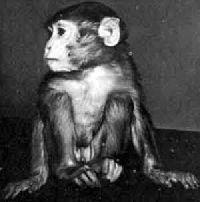Downtown
The morning rush hour today was disrupted with a flurry of gunfire, as a jilted Filipino cook sought vengeance on his former paramour, then ran through the streets shooting, endangering police and citizens.
The fight erupted in a food stand in a parking lot at 526 S. Hill Street, when Benedicto Ilamin (aka Bill Sipa), 25, asked his ex-girlfriend Opal Johnston, 33, for a cup of coffee. As she turned to get it, he aimed his .38 and shot her in the hip. Charles Dubou, a 31-year-old waiter who was a customer, attempted to disarm Ilamin and was himself shot in the mouth.
Ilamin ran from the hot dog stand through the parking lot, where he encountered Edward Hubbell, 51, a special officer, who gave chase. The two exchanged shots, and Hubbell was wounded in the leg. As Ilamin crouched to reload, Hubbell grabbed and disarmed him. At this point, a passing traffic officer, Dean Doolan, appeared on the scene and effected Ilamin’s surrender.
From her hospital bed, Johnston explained that she had lived with the much younger man at 721 California Street until about a month ago, when she left him after he tried to knife her. She went to Las Vegas, then returned to Los Angeles, where Ilamin had begun annoying her again. He had been into the stand begging her to come back to him on Tuesday night, then again early this morning. His tears turned to rage and he told her “You won’t be working her tomorrow!” before shooting her.
All three of his victims are hospitalized. Meanwhile, Ilamin has an explanation for his rampage: “I wanted to talk to her in a nice way, but she wouldn’t let me.”
Suggested reading: Street Food (Ryland, Peters and Small International Cookbooks , Vol 1, No 4)









